Introduction: Why Whole-Home Surge Protection Matters
If you’re a homeowner who values the safety and longevity of your electronics, appliances, and home systems, whole-home surge protection should be high on your upgrade list. While most people are familiar with plug-in surge protectors, few realize that these devices only shield what’s directly connected to them. A whole-home surge protection device (SPD), installed at your main electrical panel, acts as a first line of defense against damaging voltage spikes caused by lightning strikes, utility grid fluctuations, or large appliances cycling on and off. Without this essential equipment, your expensive smart TVs, computers, refrigerators, and even HVAC systems are left vulnerable to the kind of catastrophic damage that can happen in a fraction of a second.
This guide will walk you through everything you need to know to confidently select, install, and maintain a whole-home SPD. From understanding the technical jargon and code requirements to step-by-step installation instructions and practical troubleshooting tips, you’ll learn how to tackle this crucial home upgrade yourself. Whether you’re an experienced DIYer or a careful beginner, this resource will help you avoid common mistakes, save on electrician fees, and enjoy true peace of mind every time the next thunderstorm rolls through.
How Whole-Home Surge Protectors Work
Understanding Electrical Surges
Electrical surges are sudden increases in voltage that travel through your home’s wiring. These spikes can originate externally (such as from a lightning strike or utility company switching) or internally (from high-power devices like air conditioners or refrigerators cycling on and off). Most household electronics are designed to handle the standard 120V, and even minor surges can degrade sensitive components over time. Severe surges can destroy appliances instantly.
What Does a Whole-Home SPD Do?
A whole-home surge protector is typically installed on your main electrical panel. It detects excess voltage and safely diverts it to ground before it can enter the branch circuits feeding your home’s outlets and hardwired devices. This protection covers everything from your wall outlets to large, permanently wired appliances like your oven and HVAC system.
- Type 1 SPDs: Installed between the utility pole and your main breaker panel. Ideal for new construction.
- Type 2 SPDs: The most common for residential retrofits, installed directly on or inside your main electrical panel.
- Type 3 SPDs: Point-of-use devices like power strips—useful as a secondary layer, but not a substitute for panel-mounted protection.
Choosing the Right Whole-Home Surge Protector
Key Features to Look For
- UL 1449 Listing: Always choose a device rated to the latest UL (Underwriters Laboratories) 1449 standard for safety and performance.
- Nominal Discharge Current (In): Indicates how much surge energy the device can handle. Look for devices with at least 10kA (kiloamps) per mode.
- Maximum Surge Current: Higher ratings (20kA to 80kA) offer greater protection, especially in areas with frequent lightning.
- Clamping Voltage: The lower, the better (typically 330V–400V). This is the voltage at which the SPD diverts excess energy.
- Status Indicators: LED lights or alarms that let you know if your SPD is still operational.
- Warranty: Many manufacturers offer equipment warranties if their device fails. Review the fine print for coverage limits and exclusions.
Recommended Models (2024)
- Siemens FS140 — High maximum surge rating, easy installation, comprehensive LED indicators.
- SQUARE D HEPD80 — Widely compatible, budget-friendly, strong warranty.
- Eaton CHSPT2ULTRA — Compact, robust, with versatile mounting options.
- Leviton 51120-1 — Good for tight spaces, offers premium diagnostics.
What You Need Before You Start
- SPD unit (Type 2, UL 1449 listed)
- Dedicated double-pole circuit breaker (consult your panel’s manufacturer and local code for amperage)
- Insulated screwdrivers and nut drivers
- Voltage tester or multimeter
- Wire stripper and cutter
- Drill and drill bits (if mounting to panel exterior)
- Personal protective equipment (PPE): safety glasses, insulated gloves
- Labeling materials (for breaker and panel)
Safety Checklist: Preparing for Installation
- Shut off the main breaker before working inside the panel.
- Test all circuits with a voltage tester—confirm zero voltage.
- Remove any jewelry and wear rubber-soled shoes.
- Work in dry conditions—never install an SPD in wet or damp environments.
- Read the SPD manufacturer’s instructions thoroughly. Some models require specific breaker placement or wire lengths for proper operation.
- If you are uncomfortable or unfamiliar with panel work, consult a licensed electrician.
Step-by-Step Installation Guide
1. Power Down and Open the Panel
Turn off the main breaker to disconnect power to the entire panel. Use a voltage tester on several circuits to confirm power is off. Remove the panel cover, keeping screws organized for reassembly.
2. Find a Suitable Mounting Location
Most Type 2 SPDs are surface-mounted on the outside of the panel or snap into a knockout hole. Choose a location as close as possible to the main breaker or bus bars to minimize wire length (typically less than 12 inches).
3. Install the Double-Pole Breaker
Install a dedicated double-pole circuit breaker according to your panel’s instructions. This breaker will feed the SPD. Label the breaker for future reference (e.g., “Surge Protection Device”).
4. Mount the SPD
Secure the SPD using the provided screws, locknuts, or mounting brackets. If external, run the SPD’s wires through a knockout hole into the panel. Use a grommet or bushing to prevent chafing.
5. Wire the SPD
- Connect the SPD’s black or red wires to the two terminals of the new double-pole breaker.
- Attach the white (neutral) wire to the neutral bus bar.
- Connect the green (ground) wire to the ground bus bar.
- Keep all wires as straight and short as possible—excess wire acts as an antenna for surges.
- Tighten all connections firmly, but do not overtighten (which can damage terminals).
6. Verify Connections and Close the Panel
Double-check every connection. Ensure there are no stray wires or loose terminals. Replace the panel cover, making sure no wires are pinched. Confirm the SPD is securely mounted and its status indicators are visible.
7. Restore Power and Test
Turn the main breaker back on. Switch on the new SPD breaker. If your SPD has LED indicators, confirm that they show normal operation (typically green). Some units have test buttons or require a multimeter check—refer to the manual.
Compliance and Permitting Considerations
In most jurisdictions, installing an SPD is considered a minor electrical upgrade, but always check local code requirements before starting. Some municipalities require a permit or inspection, especially if you are modifying the main panel. If you’re in a condo or HOA-regulated property, approval may be needed.
- Use only UL-listed devices and compatible breakers for your specific panel brand.
- Document your installation with photos and keep the manufacturer’s instructions for future reference or warranty claims.
Maintenance and Troubleshooting
Routine Checks
- Inspect the SPD’s status lights monthly. A dark or red indicator may signal the device has sacrificed itself during a major surge and needs replacing.
- Check for any loose wiring or signs of overheating (discoloration, melted insulation) annually.
- Test ground connections using a multimeter to ensure proper function.
When to Replace the SPD
- Immediately after a known major surge event or lightning strike.
- If the manufacturer’s indicator shows failure or the warranty period has expired.
- Every 5–10 years, or as recommended by the manufacturer, even if no issues are apparent.
Common Issues and Solutions
- SPD doesn’t power on: Check that the dedicated breaker is switched on and that wiring is correct.
- Indicator shows failure: Replace the SPD immediately to maintain protection.
- Nuisance tripping: Ensure you have the correct breaker size and that wires are not reversed.
Complementary Protection: Layering Strategies
While a whole-home SPD offers robust protection, it works best as part of a layered approach. Use quality point-of-use surge protectors on sensitive electronics and always follow manufacturer guidelines for electrical installation and grounding. Consider installing SPDs on subpanels or at key appliances that are particularly vulnerable.
Cost Breakdown and Budgeting
- Whole-home SPD: $70–$350 depending on brand and surge rating.
- Double-pole breaker: $15–$50 (must match your panel brand and type).
- Basic tools and safety gear: $0–$50 (if not already owned).
- Permit/inspection fees: Varies ($0–$100+), may not be required for all areas.
- Electrician labor (if hiring): $150–$400 for basic install.
DIY installation can save you $200–$400, provided you are confident and follow all safety protocols. Never cut corners with electrical safety or code compliance.
Frequently Asked Questions
- Will a whole-home SPD protect against direct lightning strikes? — No. SPDs help mitigate surges from nearby strikes, but a direct hit can overwhelm any protection. Lightning rods and proper grounding reduce risks.
- Do I still need plug-in surge protectors? — Yes. Panel SPDs protect against large surges, but sensitive electronics benefit from localized protection.
- Can I install an SPD if my panel is full? — Many SPDs can be wired to existing breakers or installed with add-a-space kits. Always follow manufacturer instructions.
Conclusion: Peace of Mind for Every DIYer
Installing a whole-home surge protection device is one of the smartest investments you can make in your home’s safety and resilience. With the right equipment, careful planning, and a methodical approach, most handy homeowners can complete this upgrade in a single afternoon. Not only does it protect your expensive electronics and appliances from unexpected voltage spikes, but it also shields your home’s electrical infrastructure from gradual wear and tear caused by routine surges—saving you money and headaches for years to come.
Remember, electrical work demands respect. If at any point you feel unsure, don’t hesitate to consult a licensed electrician. But for those with the skills and confidence, this DIY project is a practical way to take control of your home’s protection. Keep your SPD’s documentation, periodically check its status, and pair it with point-of-use protectors for layered security. With these steps, you can weather any storm—literally and figuratively—knowing your home is guarded by one of the best defenses modern technology has to offer.
Ready to make your home surge-safe? Gather your tools, review the guide, and take this proactive step toward lasting peace of mind.

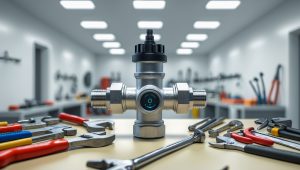

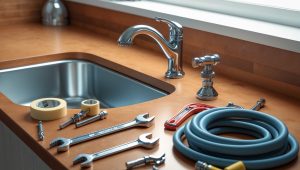
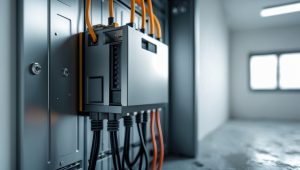

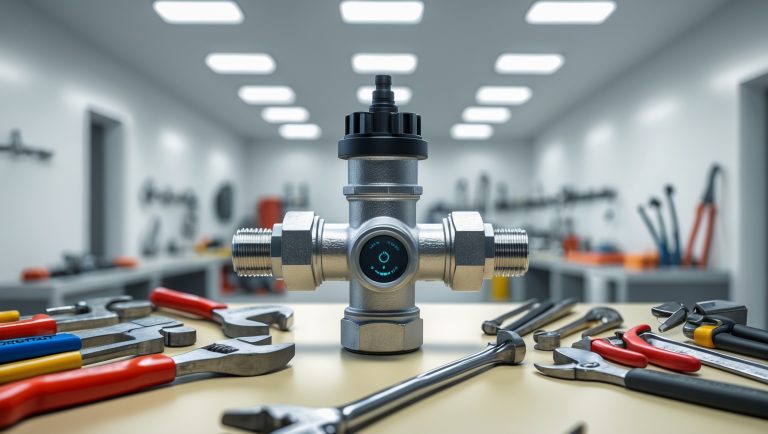

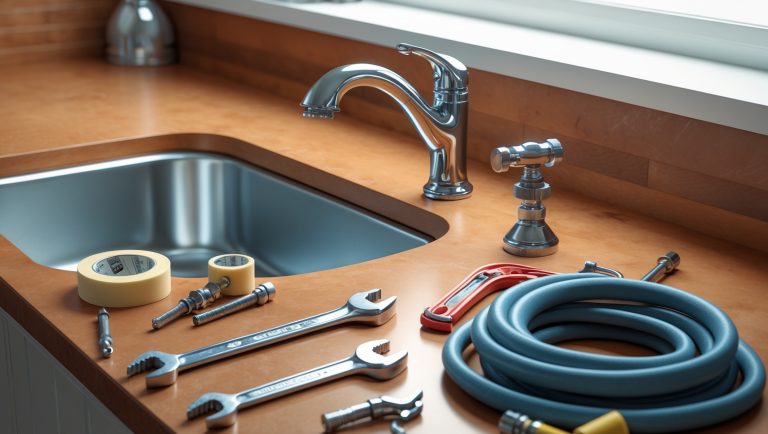

When installing a whole-home surge protector at the main panel, do I need to shut off the power at the utility meter, or is flipping the main breaker enough to safely work on the panel?
Flipping the main breaker generally disconnects power from all circuits in your home, making it safe for most panel work. However, the wiring between the utility meter and the main breaker will still be live, which can be dangerous if you’re accessing areas before the main breaker. For maximum safety, especially if you’re unfamiliar with electrical work, shutting off power at the utility meter is recommended. Always use proper safety precautions or consult a licensed electrician if unsure.
Can you clarify if installing a whole-home SPD needs any permits or inspections? I’m a DIYer, but I want to make sure I’m not skipping any required safety steps or local code requirements.
Installing a whole-home surge protection device often requires following local electrical codes, and in many areas, a permit and inspection are needed, especially since it involves work inside the main electrical panel. Check with your local building department or permitting office to confirm the specific requirements in your area before starting the installation. This ensures your work is both safe and compliant with local regulations.
You mention code requirements for installing a surge protection device, but how do I find out if my local building codes require a permit or inspection for this upgrade? Would I need to call my city, or is there a standard guideline for homeowners?
To find out if your local building codes require a permit or inspection for installing a surge protection device, it’s best to contact your city or county building department directly. Requirements can vary widely by location, and there is no universal guideline for homeowners. A quick call or visit to their website should clarify whether you need a permit or inspection before you start the upgrade.
I get that a whole-home surge protector helps against big voltage spikes like lightning, but does it also help with those smaller, more frequent internal surges you mentioned from things like refrigerators turning on? Or would I still need those plug-in surge strips too?
A whole-home surge protector does provide protection against both large external surges and smaller, frequent internal surges caused by appliances cycling on and off. However, for sensitive electronics like computers or TVs, using plug-in surge strips in addition to your whole-home unit adds another layer of defense. This combination offers the best overall protection for all devices in your home.
Can you explain how involved the installation process is for someone with basic DIY skills? I’m interested in trying this myself but a bit nervous about working near the main panel, especially when it comes to turning off the power and meeting code requirements.
Installing a whole-home surge protector does require working inside your main electrical panel, which can be risky if you’re not comfortable with electrical work. Basic DIY skills will help, but you’ll need to fully shut off power at the main breaker and carefully follow safety steps. Local electrical codes often apply, so it’s important to check those before starting. If you’re uneasy about any part of the process, it’s wise to consult or hire a licensed electrician.
Could you explain a bit more about the maintenance involved with a whole-home surge protection device? I’m wondering how often I need to check it or if there are signs it’s no longer working properly.
Whole-home surge protection devices generally require little maintenance, but it’s good practice to check them every few months. Look for indicator lights on the device; a green light usually means it’s working, while a red or no light may indicate it’s failed and needs replacement. If your device doesn’t have an indicator, consider testing or replacing it every few years, especially after a major power surge.